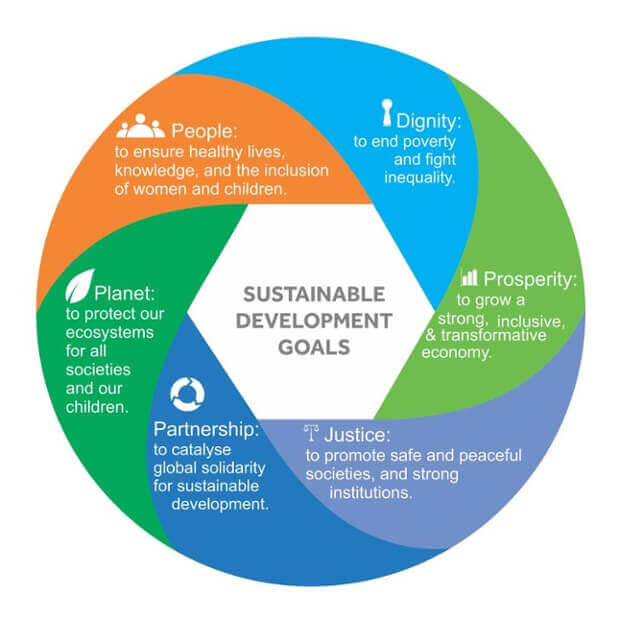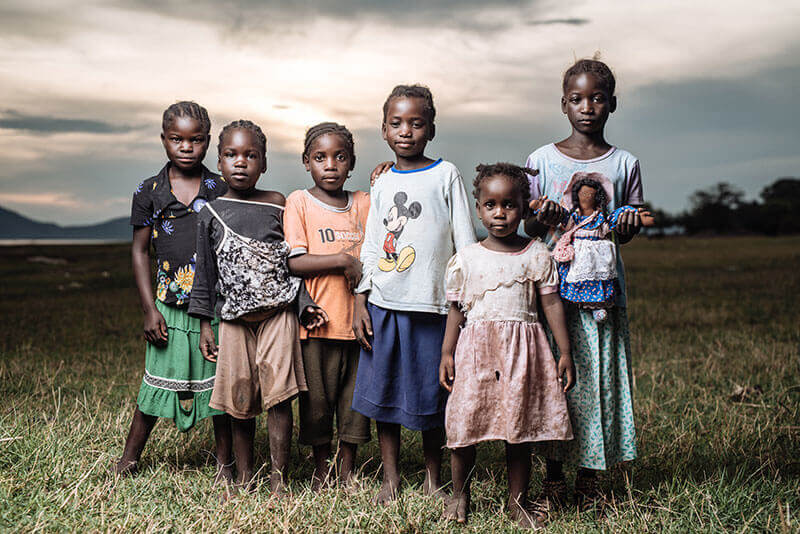Trying to navigate and understand the post-2015 negotiations can be a challenge, so to help add some clarity, last week the Global Health Technologies
Coalition (GHTC) convened a panel of experts to help explain
the ongoing debates and where the negotiations stand and how health innovation is reflected in the agenda.
Here are my seven takeaways from that discussion.
1. There are still a lot of TBDs
 Six essential elements of the SDGs. Credit: UNAlthough we’re only five months away from September 2015 when the Sustainable Development Goals (SDGs) will be approved by United Nation (UN) member states,
there is still much to be determined and worked out. While it’s expected that the goals and targets will look similar to those proposed by the Open Working Group (OWG)with some refinement of the targets, the process for determining the indicators has just begun and will likely continue through March 2016.
Six essential elements of the SDGs. Credit: UNAlthough we’re only five months away from September 2015 when the Sustainable Development Goals (SDGs) will be approved by United Nation (UN) member states,
there is still much to be determined and worked out. While it’s expected that the goals and targets will look similar to those proposed by the Open Working Group (OWG)with some refinement of the targets, the process for determining the indicators has just begun and will likely continue through March 2016.
While member states work to finalize the goals, targets, and indicators, countries are also discussing financing and means of implementation for the agenda
and how to build an effective monitoring and accountability framework.
2. The proposed SDG framework is comprehensive in a way the MDGs were not
The process for determining the SDGs was much more inclusive and consultative than the process for determining the Millennium Development Goals (MDGs).
There were a range of opportunities for all member states, civil society representatives, nongovernmental organizations, other stakeholders, and even
individuals to have their ideas and voice heard. The result is a proposed agenda that is much more comprehensive (and bigger) than the MDGs (17 goals
and 169 targets in SDGs, compared to 8 goals and 21 targets in MDGs).
This inclusive process has also produced an agenda that is supposed to be universal and apply to all nations, representing a major conceptual shift. Broadly
speaking, the MDGs were 7 goals focused on low- and middle-income countries (LMICs) implementing changes and an 8th goal focused on high-income countries
(HICs) footing the bill. The SDGs are meant to be universal with all nations collectively responsible for their implementation and success. However,
given that some nations have more capacity and means to contribute to implementation and some targets and indicators are more applicable to certain
categories of nations, it’s not clear how this concept will actually be translated into action.
3. The agenda will succeed or fail based on the strengths of implementation
Getting the global community to agree on a set of development goals is only half the battle. Once the agenda is codified, it will be up to each nation
to develop and implement policies that will help the agenda be financed and realized. Individual countries will have to find ways to take national
priorities already set out for their country and ensure they can feed into the process and drive progress towards the goals. Central to the success
of implementing the agenda will be having clear targets and strong indicators to measure progress towards them.
4. How the world will pay for the agenda is an open question
 Photo: PATH/Gabe BienczyckiOne of the most daunting questions for the post-2015 agenda is how this expansive and ambitious agenda will be financed. Along with the process of defining
the SDGs, there is a secondary track and set of intergovernmental negotiations looking at how to finance development through the Third International Conference on Financing for Development (FfD) in July. A schism has arisen between LMICs and HICs on how the FfD process integrates with the post-2015 process. Many HICs would like to see the FfD
process focused on the means of implementation for the SDGs and see the outcomes integrated into the post-2015 agenda, while many LMICs would like
it to remain a separate process.
Photo: PATH/Gabe BienczyckiOne of the most daunting questions for the post-2015 agenda is how this expansive and ambitious agenda will be financed. Along with the process of defining
the SDGs, there is a secondary track and set of intergovernmental negotiations looking at how to finance development through the Third International Conference on Financing for Development (FfD) in July. A schism has arisen between LMICs and HICs on how the FfD process integrates with the post-2015 process. Many HICs would like to see the FfD
process focused on the means of implementation for the SDGs and see the outcomes integrated into the post-2015 agenda, while many LMICs would like
it to remain a separate process.
Given the universality of this agenda, one should expect financing discussions to look beyond traditional development assistance. Discussions will center
on not just how much funding is needed to achieve the agenda, but also on how those funding flows should look different in the future than they do
today including how traditional donor recipient nations, especially middle-income countries, can increase their own domestic contributions to development
and how the public sector can work together with the private sector to catalyze private-sector investment and financing for development.
5. Measuring and monitoring progress towards the SDGs will be an enormous challenge
In the MDGs, there were 50 indicators created to measure the 8 goals and 21 targets. Applying the same ratio, it would take an estimated 480 indicators
to measure the 17 goals and 169 targets of the SDGs. Even if negotiators rely on crosscutting indicators that can measure multiple targets and manage
to pare down the list to around 100, it will still be enormously difficult and costly for the national statistics agencies to monitor and measure.
It’s not currently clear how this will be financed or carried out. Yet getting the monitoring and measuring right will be essential. To get where we
want to be by 2030, the world will need to make sure we’re on the right track and meeting our commitments by 2020, but determining if we’re on the
right track will require an effective monitoring and reporting framework.
6. Health innovation is critical to achieving the SDGs but is not strongly reflected in the agenda
 Photo: PATH/Patrick McKernImproving global health will be essential to achieve the overarching goal of sustainable economic development and poverty reduction. However, achieving many of the current SDG health targets—including ending the epidemic of HIV and AIDS, tuberculosis, and malaria; ending preventable deaths in children and newborns; and significantly reducing the number of women dying in childbirth—will be impossible without new tools and technologies. Yet the development of these new technologies will not happen automatically. Thus, it’s essential that the post-2015 agenda prioritize
and acknowledge the importance of global health research and development (R&D).
Photo: PATH/Patrick McKernImproving global health will be essential to achieve the overarching goal of sustainable economic development and poverty reduction. However, achieving many of the current SDG health targets—including ending the epidemic of HIV and AIDS, tuberculosis, and malaria; ending preventable deaths in children and newborns; and significantly reducing the number of women dying in childbirth—will be impossible without new tools and technologies. Yet the development of these new technologies will not happen automatically. Thus, it’s essential that the post-2015 agenda prioritize
and acknowledge the importance of global health research and development (R&D).
Unfortunately, as it stands, the OWG proposal only includes one specific target related to R&D of new health technologies to meet the health needs
of developing countries—target 3.b—and some soft targets
related to R&D and innovation under goals 9 and 17. Further, various proposals for indicators either ignore the 3.b health R&D target entirely,
focus only on the access element of it, or propose a voluntary indicator to measure it. To achieve health for all at all ages by 2030, we’ll need to
make sure the SDGs include feasible and appropriate indicators to measure progress on global health R&D at both the global and national levels.
7. It’s on all of us to make sure the vision of the SDGs can become a reality
We all own this agenda, and we all have a role to play in implementing it. We must work to hold our national governments accountable for their commitments
and also ask ourselves what we can do as individuals to make this vision a reality. What’s clear is business as usual won’t cut it. We must ask each
sector and ourselves what we can do differently this time around to achieve the vision of the SDGs.
To watch the full panel discussion and webinar on health innovation in the post-2015 agenda, click here.



